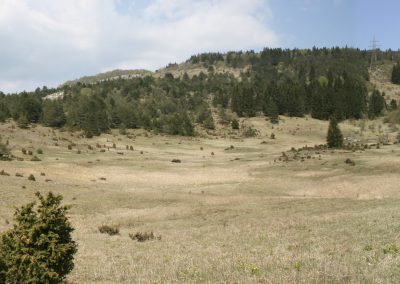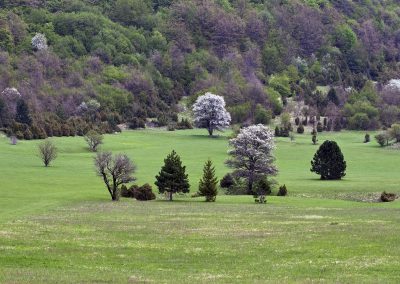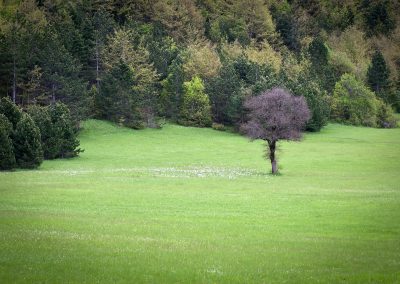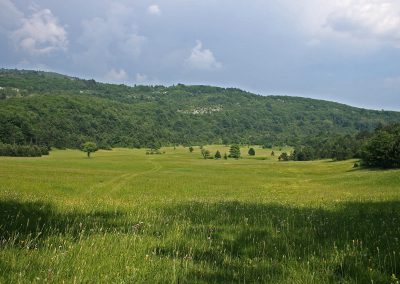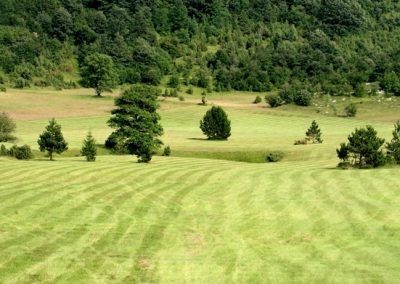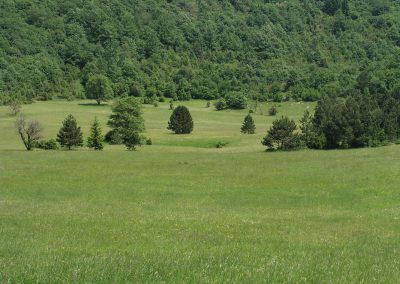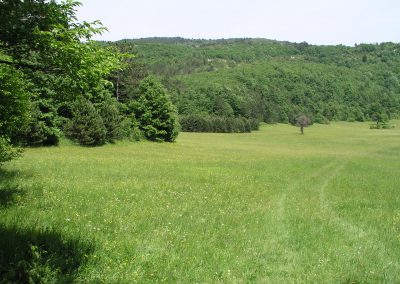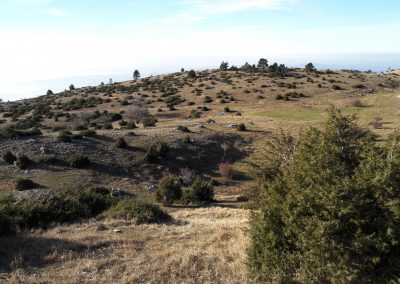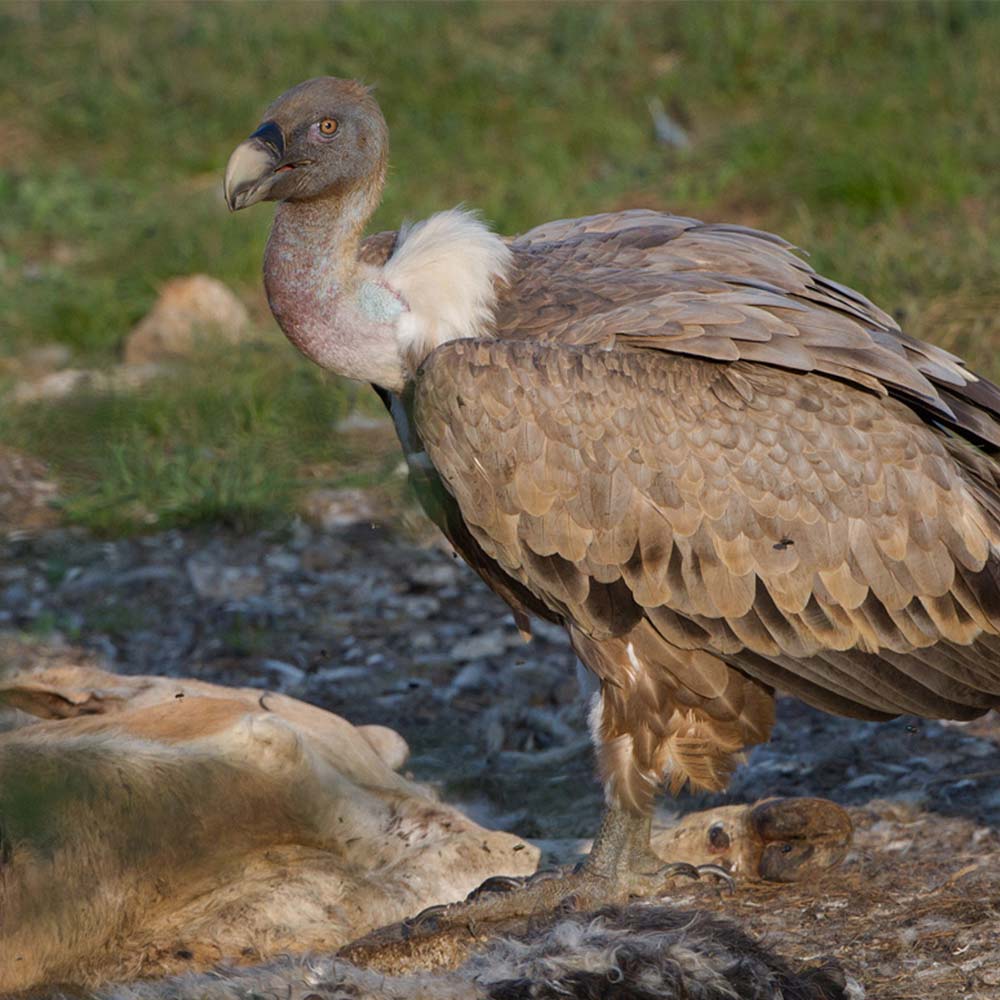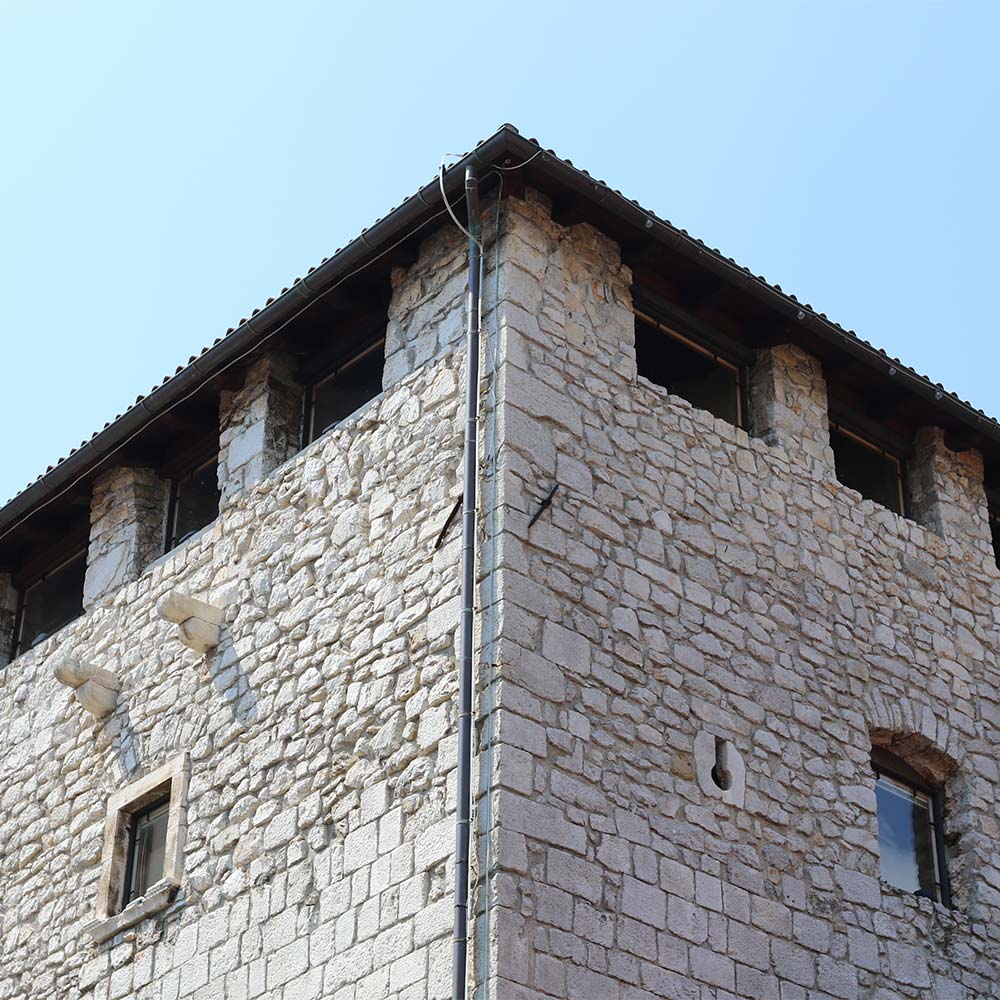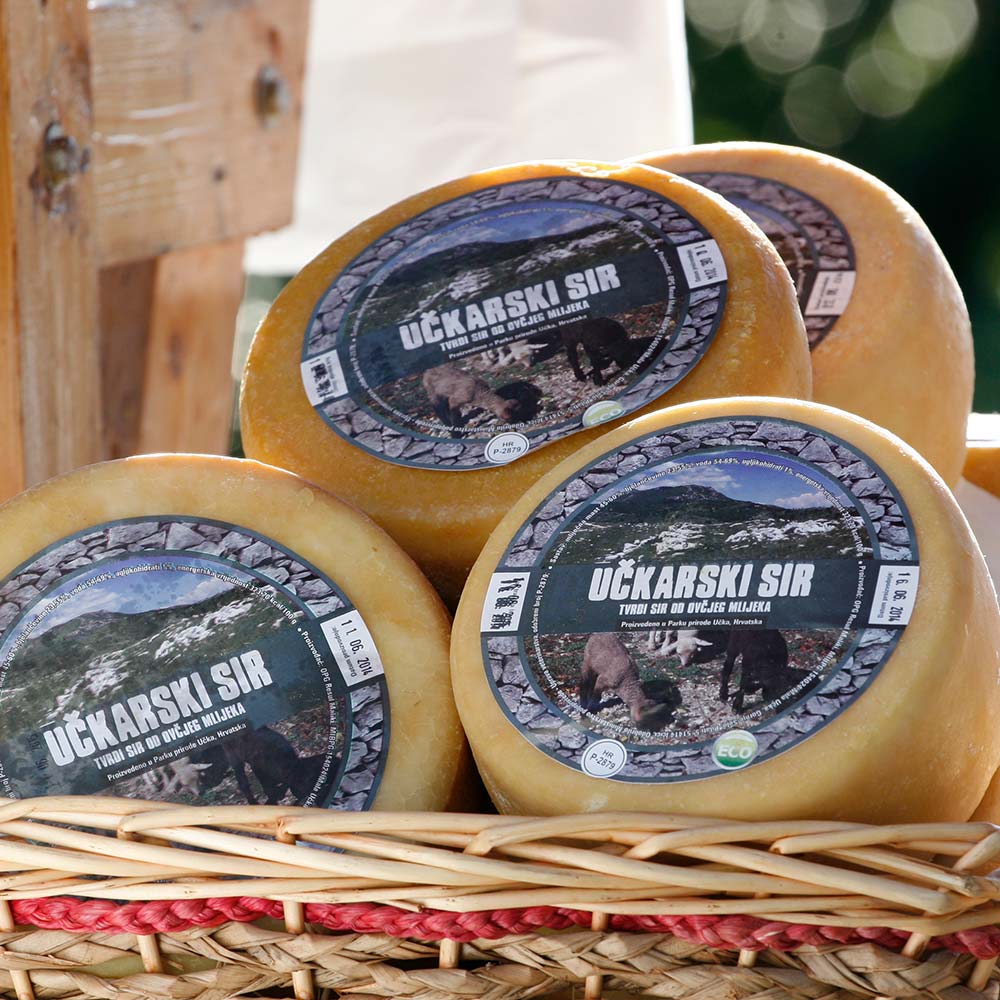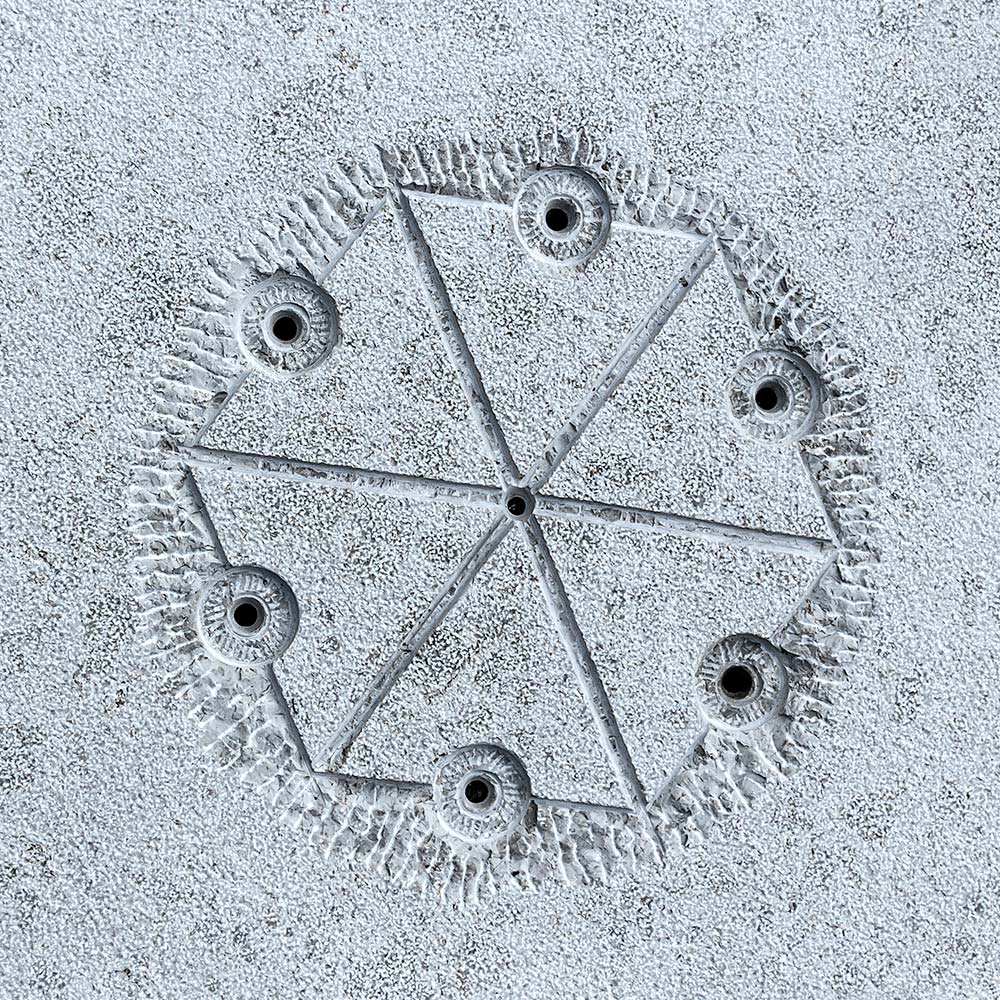The grasslands of Učka and Ćićarija are the result of millennia-long suppression of forest vegetation by human activity. Today they play a very important role in the preservation of biodiversity due to their specific and varied flora and fauna. Different grassland communities that are present in the park developed depending on how they were being managed and overall ecological factors such as bedrock, depth of soil, inclination, height above sea level, etc. Most of these grassland areas were used for pasture, and some were mowed for hay. Today, the number of areas under active management is decreasing because livestock numbers have been reduced to a historical minimum.
Grasslands are home to a variety of rare, endangered and protected plant species, such as yellow gentian (Gentiana lutea), cross gentian (Gentiana cruciata), orange lily (Lilium bulbiferum), wild daffodil (Narcissus radiiflorus), etc. Yellow gentian is an endangered species that is often dug up because of the healing properties of its root, despite legal prohibition. Cross gentian (Gentiana cruciata) is crucial for the survival of the mountain alcon blue, one of the five most-endangered European butterflies.
The most represented and best-researched community of mountain grasslands on Mount Učka is the community of hairy viper’s grass and spotted hawkweed (Scorzonero–Hypochoeretum maculatae), which due to its floristic richness and the amount of rare plant species deserves particular attention. Larger grassland areas can be found around Vela Učka, and on the flysch surface south of the Poklon Pass on the eastern side of Učka’s peak ridge. Picturesque pastures with narrow-leaved moor grass (Sesleria juncifolia) cover smaller surfaces on Vojak peak and Brgud ridge. Larger grassland areas can also be found on Ćićarija, for example in the valleys of Vela Sapca and Mala Sapca, where they are gradually becoming overgrown by thicket and forest.
Pastures with feather-grass and sage are the most represented type of pasture in almost the whole sub-Mediterranean zone at the foot of Mount Učka. However, just like the other grassland communities in the park, they are also being heavily overgrown by thicket. Sage (Salvia officinalis) is not only a well-known medicinal plant – it also provides some excellent pasturing for bees for high-quality honey. The Mediterranean-montane vegetation zone within the park encompasses several rocky pasture communities, the best-known and most noticeable being the rocky pasture with dwarf sedge and yellow karst knapweed. In its rich floristic composition, this community includes many interesting representatives of Učka’s flora, which results in variously coloured flowers during the blooming periods of individual species. There are also some areas with feather grass (Stipa pennata), which is particularly visible whenever its ripe silky feathery spikes flutter in the light breeze.

